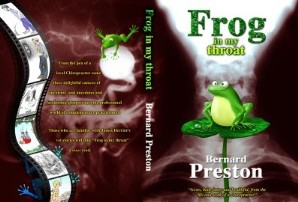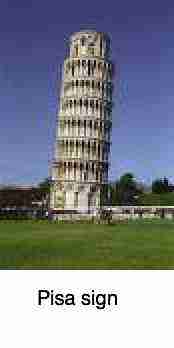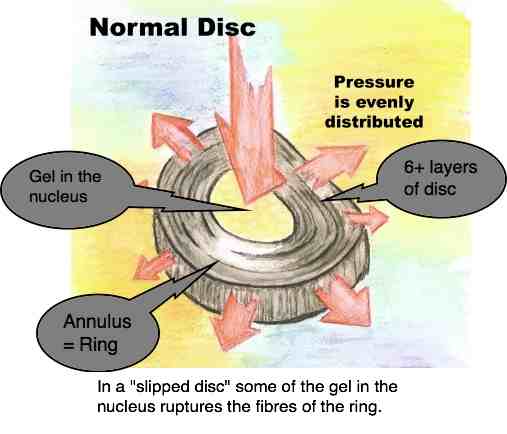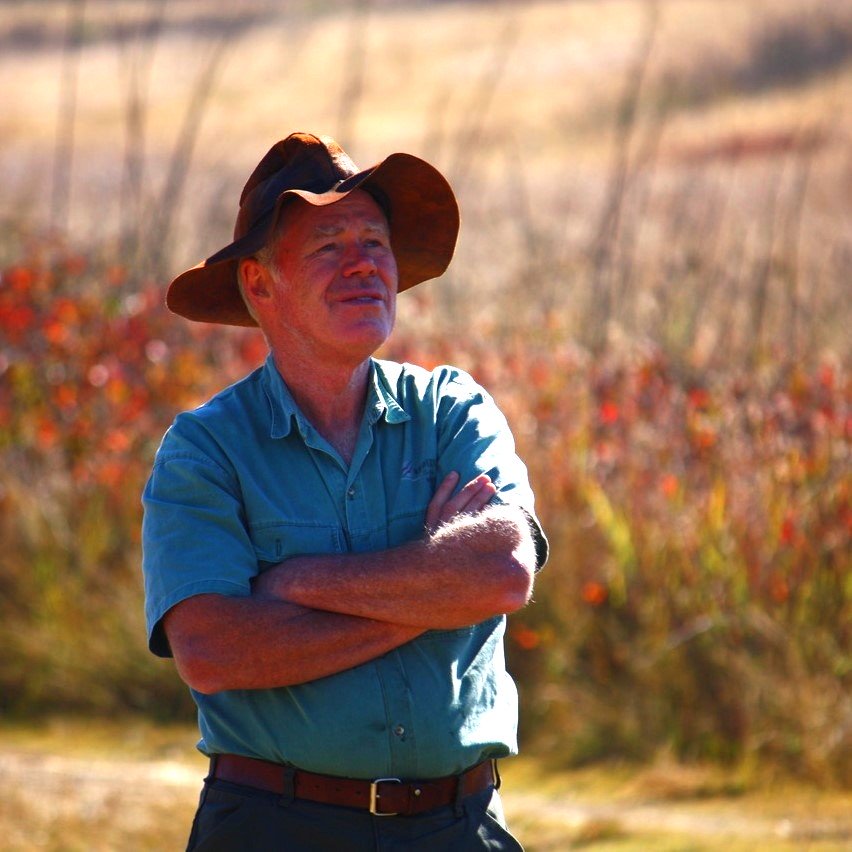- Bernard Preston homepage
- Frog
- Big Toe
Big Toe
Big Toe is an amusing story about a sciatica by chiropractor Bernard Preston.
It had been thoroughly emphasized in my chiropractic training; a limp needs to be examined fully. It is one of those simple, yet profound, signs that can be completely benign, or very serious.
As I walked down the passage to my office behind Mr. Jack Jones it became immediately obvious that this tall, angular man walked with a marked limp. Oh no, I thought, not another. Only yesterday this naïve young chiropractor had made a fool of himself but that young woman had only stubbed her foot in the night and sprained her big toe.

This page was last updated by Bernard Preston on 25th July, 2023.
Jack, too, strangely enough, also had a problem with his big toe, but nothing to do with kicking a chair in the night. During the history taking, he spoke in staccato sentences, sitting with great discomfort on one buttock, and leaning over to the side and supporting himself with his hands. Clearly here was a troubled man in great pain and, as it turned out, with the sword of Damocles hanging over him.
‘I hurt my back three months ago, doc,’ he blurted out. ‘And now they want to cut.’
‘How did it happen?’ was my first probing question. The cause, if known, gives essential information in making the right diagnosis.
Big Toe
Big toe is the tale of the slipped disc that Bernie's motorcycle mechanic experienced.
Frog in my Throat
"Well, I was lifting a battery out of a tractor when suddenly I nearly fell over with this pain in the small of my back." My mind went momentarily back to the days of my childhood, thinking of my uncle lifting the battery out of a tractor; great big heavy things, full of lead, especially designed to do in a man’s spine!
"And then?" I inquired.
"Well, my doctor gave me some pain killers and put me in traction for three days."
He had a slightly amusing way of beginning every sentence with ‘well’.
"Well, I could not stay any longer than that, of course. It wasn’t helping anyway. I run my own business and times are very tight, you see," the staccato voice ran on.
A diesel mechanic by trade, Jack ran one of those small one man businesses, going out to farms in the area doing routine maintenance on large and, sometimes not so large vehicles, as I was to discover.
It was only later, when I had been in practice for a few years and cut my finger on my radial arm saw, that I realized how difficult it is for a one-man business to close down, even for a few days.
‘Well,’ continued Jack, ‘as long as I was taking the painkillers I could go on working. Sort of, although it was terrible in the morning. My wife had to put my boots on and tie the laces. I was all leaning over to the side. Sort of like the leaning tower of Pisa,’ he continued with a wry grin. Just then Jack gave a little cough and was immediately wracked by a painful spasm. I could see this large, strong man was in agony. Big boys can’t cry, I thought, but poor Jack had a lot of crying to do though, no doubt fortuitously, neither of us could see into the future.
"When the world wearies,
and society ceases to satisfy,
there’s always the garden."
He went on with the details that so often follow a neglected back. The onset of pain in his left leg, just in the buttock initially but then all the way down to the foot. Then the receding lumbago and increasing gripping ache in the calf, the inability to sit for more than a few minutes and finally the limp that characterizes the onset of a semi-paralyzed limb.
The Pisa bit was very significant. Leaning over to the side is a sure sign of a serious injury.
When I examined Jack it didn’t take long to confirm my fears. He had a slipped disc between the fourth and fifth lumbar vertebrae and it was pinching the nerve root so badly that, not only was his leg numb, but it was also going lame. That was why he was limping so badly.
Jack was unable to lift his great toe off the ground because the motor branch of the sciatic nerve to the muscle, with the awful Latin name Extensor Hallucis Longus, or EHL, that students hate so much, was being so badly squeezed in his back. The ‘extensor hallucis longus’ or EHL as the muscle is known. An ominous sign.
The slipped disc has a number of medical names often used fairly loosely and interchangeably. Perhaps the term disc ‘herniation’ best describes what happens. The disc is made up of two parts, an outer ring that consists of a tough fibrous mesh that looks a bit like a cut through an onion, and an inner gel looking a little like egg-white. The bubble of gel, being an incompressible liquid, is what gives the disc its shock absorber quality. It enables one to bounce up and down, jump off a wall and bend and twist without breaking the bones of the spine. But the large nerves to the legs are found close behind the outermost layer of the discs in the lower spine.
‘Have you been tripping at all, Jack?’ I inquired.
He looked at me, amazed, as though I were some numen with startling psychic intuition. ‘How did you know?’ he demanded. ‘I fell down yesterday and it was only a tiny tuft of grass that I stumbled over!’
I went on to explain how the great toe is automatically lifted in the swing phase of walking and, now that that EHL was semi-paralyzed, he was likely to trip. It was something quite simple really, but it earned his respect. Essential in a case like this. Because self-employed or not, Jack was going to have to stop working if he was to escape the knife. And so began a doctor-patient relationship that was to come close to friendship, spanning many years. Fortunately neither of us could look into the crystal ball, for the closing chapter was to be frighteningly painful for us both.
Jack had what neurologists called “hard neurological” signs. Medics say we chiropractors should not be treating them. But I was young and naïve enough to believe that chiropractic could cure any back and, in Jack’s case, we were both lucky. As Jack walked out the door I picked up the phone and looked up his home phone on the file. It rang and rang. I looked again at his file and found his wife’s work number: ‘Is that Mrs. Jones?’
‘No, she’s teaching right now. Please phone again in ten minutes.’
‘Yes,’ came the guarded reply to my second call. ‘Who’s this?’
‘Dr. Preston, the chiropractor. Your husband consulted me this morning. I’m sure you know he has a serious problem. Please keep him home for six weeks. Sit on him if necessary, hide the bakkie keys, burn his boots, but keep him at home. Otherwise it’s the knife.’
‘Have you told him?’
‘Yes, of course, but you have to be the ball and chain.’
She laughed at that. ‘You want me to be the enforcer?’ Over the years, Janet too, was to become a patient.
Jack was frightened enough to stay at home for six weeks and, with some bullying, go through the discipline of bed rest, lots of exercises, time in the swimming pool, and self care. The first spinal adjustment let off a crack that frightened him momentarily, but the next day Jack was definitely a little better. I had arranged to see him at home for a week as getting to my office was likely to undo my handiwork.
‘Hey, doc, I’m better. Wife still had to put my socks on, though,’ he smiled for the first time. ‘Can I go back to work tomorrow?’
I sighed. How was I going to convince Jack? Here he was, still looking like the leaning tower of Pisa and wanting to go back to work. But I could raise his leg higher and he had slept better than he had for weeks. It’s not always that quick. ‘The impossible I can do at once, Jack. But miracles take a little longer! Don’t even think of going back to work ’cause this is definitely going to take a small miracle,’ I smiled at him. ‘I’ve coined an important new chiropractic term, thanks to you. It’s called the Pisa sign.’
‘You mean because I’m leaning over like this? What’s it mean anyway?’
‘When you slip a disc, sometimes the bulge threatens the sciatic
nerve root and, to protect the nerve, the body puts you into this
strange posture. It’s really called an antalgia but I like “Pisa sign”.
You’ll be famous!’

‘What does antalgia mean?’ Jack asked. Now that he was not in such pain he was beginning to take an interest in the mechanical nature of his injury. I encourage it. Patients who understand their injury are more likely to cooperate in their healing. ‘Its really two words joined together. Ant meaning “away from”, and algia meaning “pain”.’
He pondered that for a moment. I could see that something was worrying him: ‘But I’m leaning towards the painful side, not away from it. I don’t understand.’
‘That’s why you especially can’t go back to work, Jack. There are two kinds of slipped discs. In the simpler kind you lean away from the pain. But in your kind, where you lean towards the pain, it is even more serious. Research on large numbers of patients with this type of injury, shows a high proportion end up in surgery. So behave yourself,’ I smiled at him, not at all sure he was going to listen. ‘It’s also why your stint in hospital didn’t help. Only the ‘away-from’ kind respond to traction.’
‘Why didn’t my doctor tell me that?'
‘It’s tough keeping up with the new research, especially when it’s not even your field.’ I tried defending his GP, feeling a little guilty myself. My subscription to a research journal had lapsed and the weakening Rand had made renewal very expensive.
Often I had to struggle for a week or more before finding the right combination of spinal adjustments but in Jack’s case I got it right first time and I had won a patient for life. But stop he must, and for the full six weeks while the disc healed. Getting in and out of the car was a nightmare for Jack. Being so tall, he had to flex his neck, stretching the spinal cord and its meninges and giving him severe pain in the back, which was why I went to his home for the next three treatments.
Not his home, it was Jack’s castle. The garden was staggering. All the edges were neatly trimmed and everywhere beautiful plants greeted me. And the fragrances! – that first day the Valencia oranges and a Yesterday, Today and Tomorrow were in full bloom in the front garden. Round the back I sensed there were other delights. Janet let me in for those first few visits – walking was a nightmare for Jack whilst he was so crooked. After a week his sense of humour was returning, as we glimpsed a little light at the end of the tunnel. His antalgic posture was corrected and we both had a sense that I was going to win. I encouraged him to take short walks. As I was leaving after the last of the home visits, Jack stopped me, gesturing to the back garden tucked away by an old stone wall.
‘Won't you come into the garden? I’d like my roses to meet you.’ I stopped, thinking I had heard him wrong, but the twinkle in his eye gave him away. ‘You’re a very strange man, master Jack,’ I laughed.
‘Seriously, won’t you come into my rose garden? They’re my pride and joy.’ We wandered through an old wrought iron gate into his secret garden. Hundreds of carefully tendered roses were beginning to shoot after the winter pruning. A few early gems caught my senses.
‘Roses, this is the man who has saved you from a life of terrible neglect. Greet him because ‘cause now Janet won’t have to butcher you.’
‘You’re crazy,’ I said, beginning to enjoy his wacky sense of humour.
‘Yeah, I suppose I am. But this is where I escape when engines drive me mad. Janet hates gardening.’
I looked at Jack with growing admiration, sensing that our caste system of professionals, artisans, technicians and workers was totally meaningless. Here was a man. Walking back to my car, I peeped into his garage through a window, seeing two vintage cars and a strange shape under a blanket. Noticing my questioning look, Jack unlocked the door and pulled the blanket off a stunning BMW motorcycle. Why did something click in some far off recess of my mind? I owned an ancient small Kawasaki and, for just a moment, looked longingly at the beautiful machine.
Jack recovered completely. About 70% of patients with hard neurological signs will recover with chiropractic treatment – if both the doctor and the patient do it right. It took several months for the strength of his toe to completely recover, but it did. And amazingly his troubles never returned. Unlike most patients, Jack went on doing his back exercises faithfully and it paid him handsome dividends. He knew about the importance of maintenance.
‘Well, if everybody did these exercises, would it put you out of business?’ Jack pulled my leg one day, with a laugh.
Newsletter
Our newsletter is entitled "create a cyan zone" at your home, preserving both yourself and Mother Earth for future generations; and the family too, of course. We promise not to spam you with daily emails promoting various products. You may get an occasional nudge to buy one of my books.
Here are the back issues.
- Lifestyle and ideal body weight
- What are ultra-processed foods?
- Investing in long-term health
- Diseases from plastic exposure
- Intensive lifestyle management for obesity has limited value
- A world largely devoid of Parkinson's Disease
- The impact of friendly bacteria in the tum on the prevention of cancer
- There's a hole in the bucket
- Everyone is talking about weight loss drugs
- Pull the sweet tooth
- If you suffer from heartburn plant a susu
- Refined maize meal and stunting
- Should agriculture and industry get priority for water and electricity?
- Nature is calling
- Mill your own flour
- Bake your own sourdough bread
- Microplastics from our water
- Alternative types of water storage
- Wear your clothes out
- Comfort foods
- Create a bee-friendly environment
- Go to bed slightly hungry
- Keep bees
- Blue zone folk are religious
- Reduce plastic waste
- Family is important
- What can go in compost?
- Grow broad beans for longevity
- Harvest and store sunshine
- Blue zone exercise
- Harvest and store your rainwater
- Create a cyan zone at your home
"Probably, but they don’t. And, in any case, it is people like you who get better, and stay well, who refer me all their friends and relatives."
Jack and I developed an easy relationship. We became close to being friends but he was wise enough to jump when I said “jump.” I saw him for other relatively minor problems over the years but never again did his leg trouble him. He had the occasional bout of mild low back pain but he learnt to maintain it with his exercises and the odd spinal adjustment.
But Jack’s wife, Janet was another story altogether.
SLIPPED DISC
The disc between the vertebrae in the spine is made up of two parts.
- A fibrous washer called the Annulus fibrosis
- An inner gel, called the nucleus pulposis

Right behind the outermost fibres of the annulus lies the nerve. In Jack's case it was the nerve to his big toe emerging from between L4 and L5 pinching the L5 root of the sciatic nerve: sciatica.
When browsing use right click and "Open Link in New Tab" or you may get a bad gateway signal.
Bernard Preston
Bernard Preston is a semi-retired DC with a passion for life; in part in a religious sense, he is a layminister in the local Anglican church. Big toe is a short story from his first book of anecdotes from the coalface.
But also in healthy living, and in each of doing our bit to ensure our grandchildren have a habitable planet to live on.
The race to end waste is part of the deal, to reduce the 1.3 billion tons of food that's never eaten, but also to wean off plastic.
Would you put your big toe on this beach?

Did you find this page interesting? How about forwarding it to a friendly book or food junkie? Better still, a social media tick would help.
- Bernard Preston homepage
- Frog
- Big Toe
Address:
56 Groenekloof Rd,
Hilton, KZN
South Africa
Website:
https://www.bernard-preston.com
